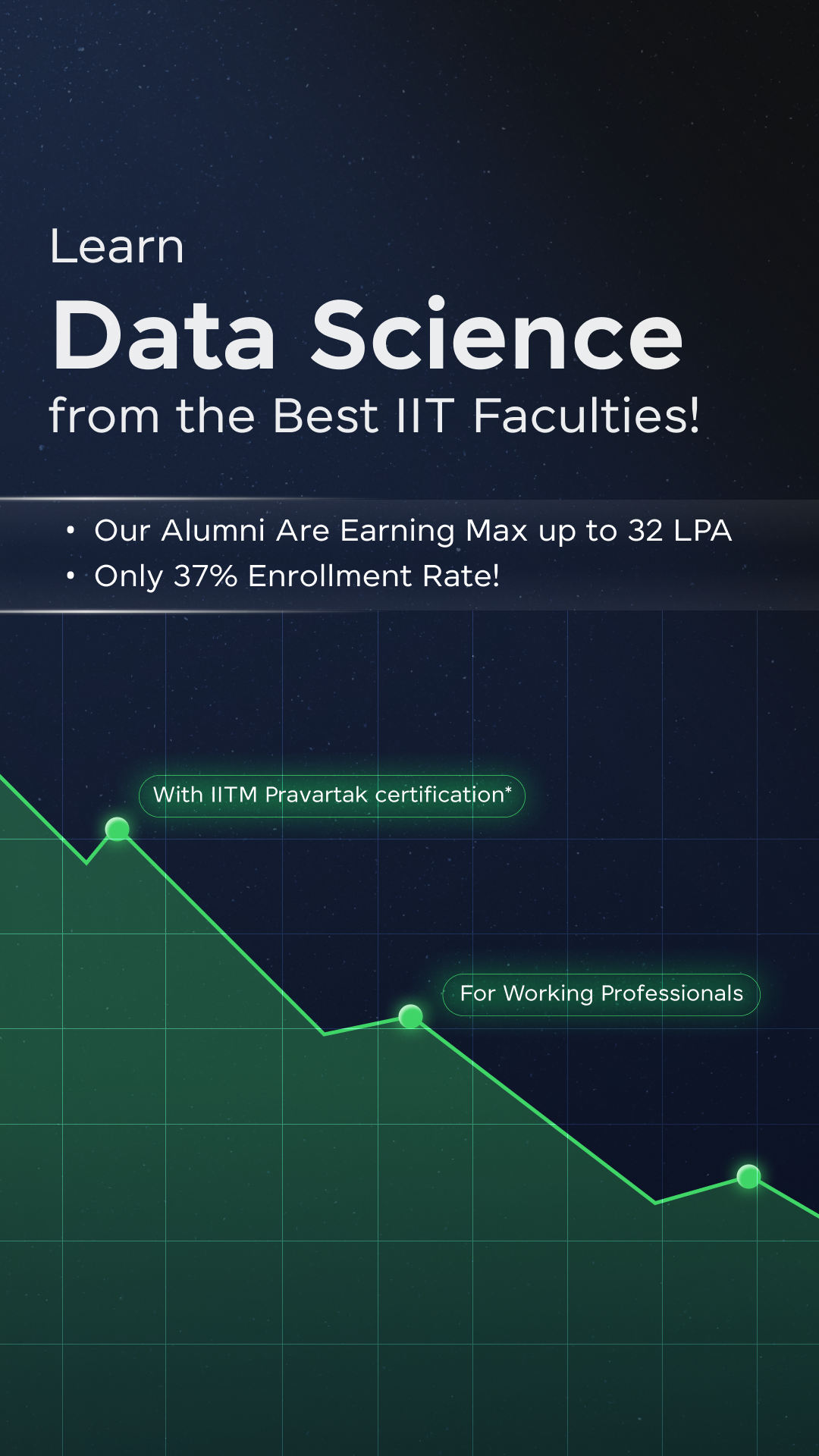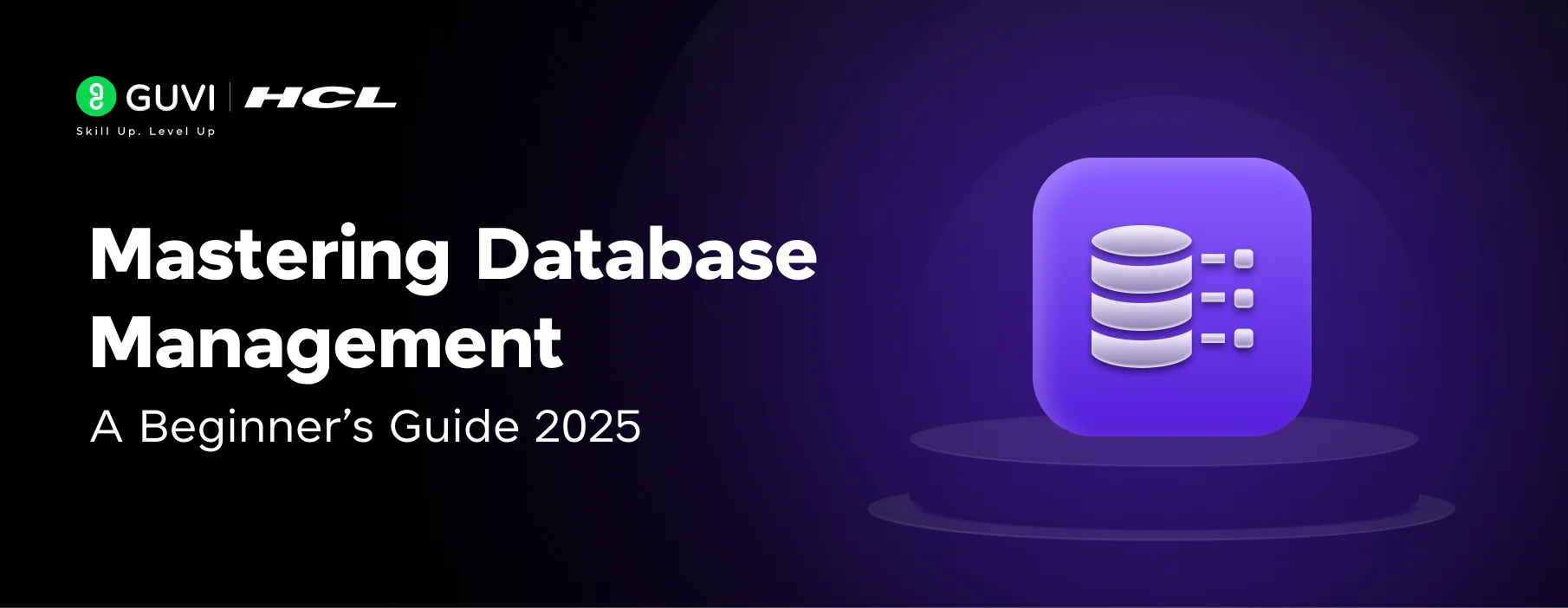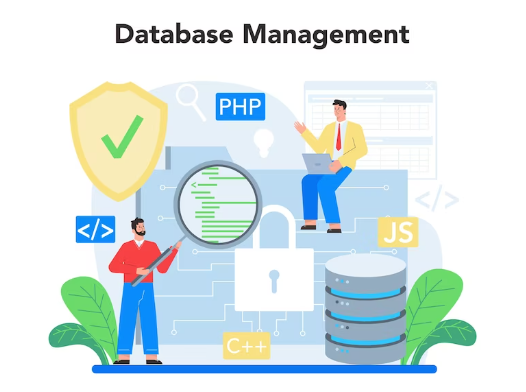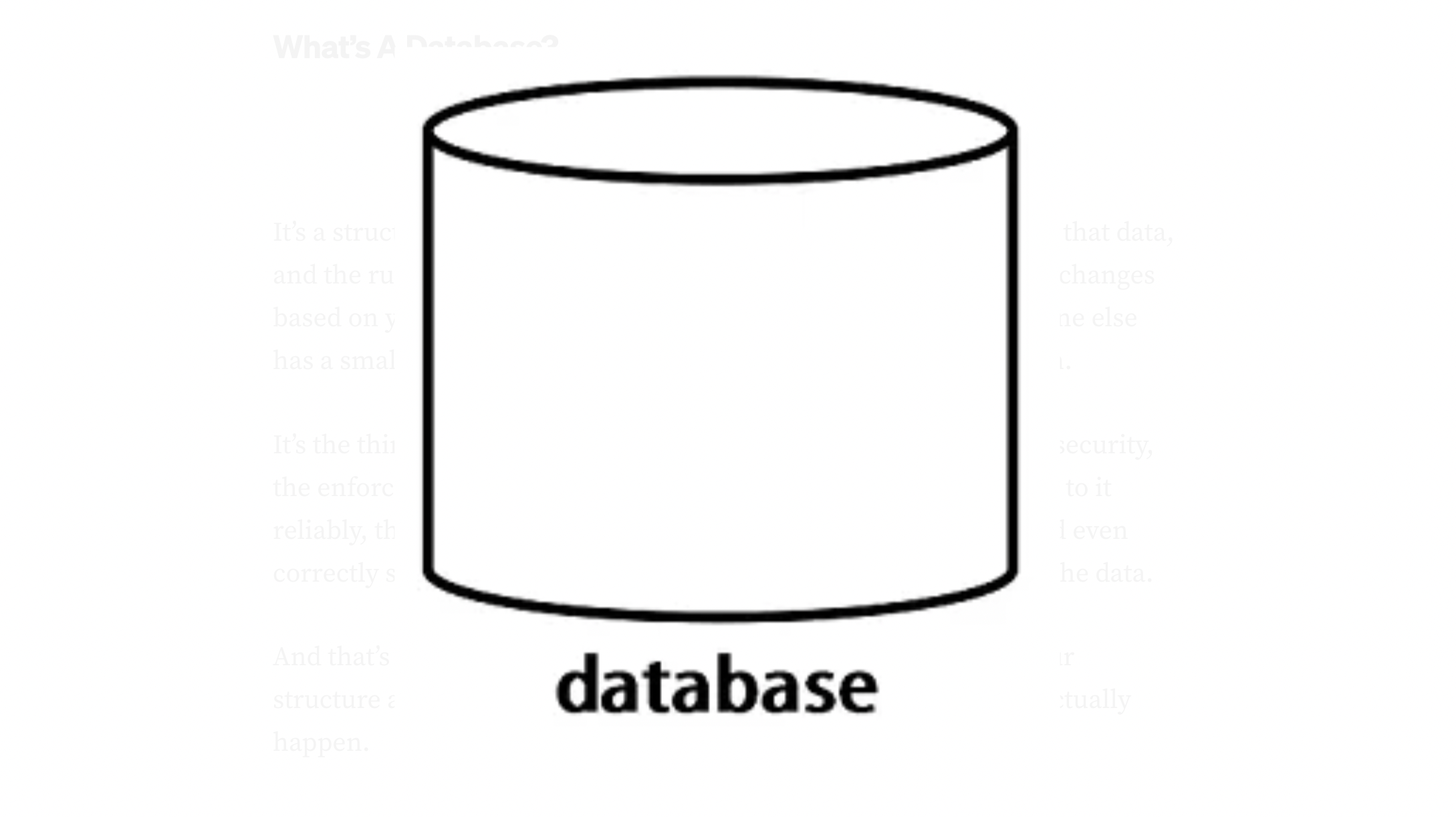![Mastering Database Optimization: Advanced Indexing Techniques for Performance [2025] 1 Post thumbnail](https://www.guvi.in/blog/wp-content/uploads/2024/04/Feature-Image-Mastering-Database-Optimization-Advanced-Indexing-Techniques-for-Performance.webp)
Mastering Database Optimization: Advanced Indexing Techniques for Performance [2025]
Dec 21, 2024 7 Min Read 5586 Views
(Last Updated)
In today’s digital age, database optimization stands at the heart of ensuring smooth and efficient data management, especially as data generation skyrockets.
Indexing, an integral element of database optimization, acts like a powerful engine driving the rapid retrieval of data, much like the index at the back of a book simplifies the search for information.
With the growing complexity and volume of data, mastering advanced indexing techniques is paramount for optimizing database query performance, highlighting the indispensability of indexes, ORM, database normalization, and database indexes in the realm of large datasets.
Throughout the article, we’ll explore the delicate balance between resource utilization and indexing performance, and guide you through practical implementation strategies to boost your database’s efficiency.
Table of contents
- The Importance of Database Indexing
- Understanding Different Types of Indexes for Database Optimization
- 1) Primary and Unique Indexes
- 2) Clustered and Non-Clustered Indexes
- 3) Specialized Index Types
- Exploring Advanced Indexing Techniques
- 1) Composite Indexes
- 2) Covering and Expression Indexes
- 3) Partial Indexing and Index Intersection
- Analyzing Query Patterns for Effective Indexing
- A) Identifying Key Query Components
- B) Measuring Query Performance
- C) Strategic Index Planning
- Index Maintenance and Performance Tuning
- 1) Regular Monitoring and Maintenance
- 2) Optimization Techniques for Enhanced Performance
- 3) Strategic Index Maintenance Planning
- Choosing the Right Indexing Strategy
- A) Assessing Your Database Needs
- B) Balancing Index Costs and Benefits
- C) Implementing and Maintaining Indexes
- Balancing Resource Utilization and Indexing Performance
- Practical Implementation of Indexing Strategies
- 1) Continuous Learning and Experimentation
- 2) Efficient Query Optimization
- 3) Advanced Indexing Techniques and Maintenance
- Takeaways...
- FAQs
- How can indexes be used to optimize performance?
- What is optimizing database performance?
- How is indexing done in the database?
- What is the indexing technique?
The Importance of Database Indexing
Database indexing is a critical component in optimizing database performance. By creating indexes, databases can avoid scanning entire tables for data retrieval, significantly speeding up query execution times.
Here are some key aspects of how indexing enhances database functionality:
- Speed and Efficiency: Indexes provide rapid access to data rows in a table by avoiding the need to scan every row. This is particularly beneficial for complex queries where speed is crucial.
- Data Structure Utilization: Indexes work by creating a unique data structure that links column values to their respective locations in the database. This setup allows for quick data retrieval, akin to using a directory to find a specific page in a large book.
- Optimized Query Performance: For databases dealing with large volumes of data, indexing minimizes the data the engine needs to scan, sort, or join during queries. This not only results in faster response times but also reduces resource consumption, enhancing overall system efficiency.
Also Read: How Does Database Servers Work? Explained with Illustrations
Indexing should be strategically implemented in scenarios involving frequent search queries and large datasets to maximize performance improvements.
However, it is less beneficial in databases with high write operations or smaller datasets due to the overhead of maintaining the indexes.
Properly utilized, indexing is an indispensable tool for managing complex database environments efficiently.
Would you like to master Data Science and build an impressive portfolio of projects? Then GUVI’s Data Science Professional with IITM Pravartak Certification in Advanced Programming Course is the perfect choice for you, taught by industry experts, this course equips you with everything you need to know along with extensive placement assistance!
Understanding Different Types of Indexes for Database Optimization
Indexes are essential tools in database management, allowing for efficient data retrieval and optimizing performance across various database systems.
Understanding the different types of indexes is crucial for database administrators and developers to make informed decisions about which indexing strategy best suits their needs.
1) Primary and Unique Indexes
- Primary Indexes: Automatically created when a primary key is defined, ensuring each record in a database is uniquely identifiable. This index organizes data in the table according to the primary key.
- Unique Indexes: Similar to primary indexes but can be applied to any column that needs to enforce uniqueness, preventing duplicate entries in those columns.
2) Clustered and Non-Clustered Indexes
- Clustered Indexes: Determine the physical storage order of data in the table and are directly linked to the table’s row order. There can only be one clustered index per table as it rearranges the physical data.
- Non-Clustered Indexes: Do not alter the physical order but create a separate structure within the database where each entry points back to the corresponding row in the table. This type allows for multiple non-clustered indexes per table.
3) Specialized Index Types
- Composite Indexes: Built from two or more columns, useful for queries that involve multiple fields. These indexes optimize performance for complex search patterns.
- Bitmap Indexes: Utilize bit arrays and are efficient for columns with a limited number of unique values, enhancing performance by conducting bitwise operations.
- Full-Text Indexes: Designed for text searching in large textual data fields, they support queries that involve textual search expressions.
- Spatial and Geospatial Indexes: Facilitate queries that involve spatial data such as coordinates and geographical areas.
By leveraging these different types of indexes, developers can significantly enhance query performance, especially in environments dealing with large and complex datasets.
Each index type offers specific benefits and comes with particular considerations, such as maintenance overhead and impact on write performance, which must be carefully evaluated against the database’s operational requirements.
Also Read: Data Science vs Data Analytics | Best Career Choice in 2025
Exploring Advanced Indexing Techniques
Diving deeper into advanced indexing techniques, it’s essential to understand how these can significantly enhance your database’s performance.
Let’s explore some sophisticated methods that can be strategically implemented to optimize query execution.
1) Composite Indexes
- Composite indexes, which involve indexing multiple columns together, are tailored for scenarios where queries frequently filter or sort based on multiple conditions.
- By combining columns, these indexes can dramatically reduce the number of scans needed, speeding up data retrieval.
- The order of columns in a composite index should be carefully considered, based on the frequency and type of queries executed against the database.
2) Covering and Expression Indexes
- Covering indexes are a powerful tool in database optimization. These indexes include all the fields required by a query, allowing the query to be processed entirely within the index without accessing the table data.
- This can drastically reduce I/O operations and speed up query performance. Similarly, expression indexes are created by indexing the result of an expression.
- This is particularly useful for queries that involve calculations or transformations, enabling faster querying of complex data.
3) Partial Indexing and Index Intersection
- Partial indexing allows for indexing only a portion of the table data, which can be beneficial for large datasets where only a subset of data is frequently accessed.
- This technique reduces disk space usage and improves performance by limiting the index size and maintenance overhead.
- Index intersection, on the other hand, utilizes multiple indexes in tandem to fulfill a query, which can be more efficient than using a single, more complex index.
By applying these advanced indexing techniques, you can tailor your indexing strategy to fit specific needs and scenarios, leading to more efficient and faster database systems.
These methods highlight the importance of understanding both the data and the queries that operate on it to choose the most effective indexing strategy.
Must Read: Top 10 High Paying Non-Coding Jobs in Data Science in 2025
Analyzing Query Patterns for Effective Indexing
A) Identifying Key Query Components
- To optimize indexing effectively, start by analyzing the most frequently executed queries. Focus particularly on those columns that are often involved in search conditions, join operations or sorting.
- This analysis helps in pinpointing which columns are prime candidates for indexing.
- For instance, if certain columns are consistently used in the
WHEREclause orJOINstatements, these should be prioritized for indexing to enhance query performance significantly.
B) Measuring Query Performance
- It’s crucial to measure the performance of your queries to understand the impact of current indexing strategies. Look at metrics like execution time, number of rows scanned, and disk reads/writes.
- High disk usage or a large number of rows scanned might indicate a need for better indexing.
- Tools that monitor SQL performance can give insights into how queries interact with the database structure, allowing for more targeted optimizations.
C) Strategic Index Planning
- After identifying critical columns and measuring query performance, plan your indexing strategy. Consider creating composite indexes on columns frequently used together in queries.
- Also, evaluate the need for partial indexing or index intersections to handle complex queries efficiently.
- Regular monitoring and optimization of these indexes are essential, ensuring they adapt to evolving data use patterns and continue to serve their purpose of speeding up data retrieval and reducing the load on the database system.
Also Read: 10 Best Database Management Systems For Software Developers
Index Maintenance and Performance Tuning
Regular maintenance of database indexes is crucial for ensuring optimal performance and efficiency. Here are essential practices for maintaining your database’s indexes effectively:
1) Regular Monitoring and Maintenance
- Index Reorganization and Rebuilding: Over time, indexes can become fragmented, which negatively impacts query performance. Regularly reorganizing or rebuilding indexes helps in maintaining page density and reducing fragmentation.
- Monitoring Index Usage and Performance: Utilize tools such as Database Performance Analyzers to track how often each index is used and its impact on query performance. This data is vital for determining which indexes are beneficial and which might be redundant.
- Updating and Modifying Indexes: Based on performance metrics, regularly update or modify indexes. This includes dropping unused indexes and adding new ones as necessary to adapt to changing data use patterns.
2) Optimization Techniques for Enhanced Performance
- Balancing Indexes and Resource Consumption: While indexes improve query speed, they also consume storage space and processing power during write operations. It’s important to balance the number of indexes against the resources available.
- Implementing Advanced Indexing Strategies: Use indexing strategies like partial indexing or index intersections that cater to specific query types and data volumes, optimizing performance without overburdening the system.
3) Strategic Index Maintenance Planning
- Developing a Maintenance Plan: Establish a routine maintenance schedule that includes tasks such as index reorganization, updating statistics, and reviewing index configurations. This plan should be reviewed and adjusted regularly to align with the database’s operational requirements.
- Automating Maintenance Tasks: Automate regular maintenance tasks using scripts or database management tools. This ensures consistent execution and can help in identifying issues before they impact performance.
By adhering to these maintenance practices, you can ensure that your database remains fast, efficient, and scalable, handling queries with improved speed and accuracy.
Regular index maintenance not only optimizes database performance but also extends the lifespan of the database infrastructure.
Also Explore: Data Science vs. Machine Learning: What every elite coder needs to know
Choosing the Right Indexing Strategy
Choosing the right indexing strategy is crucial for optimizing database performance effectively. Here’s a focused approach to help you make informed decisions:
A) Assessing Your Database Needs
- Evaluate Query Frequency and Type: Prioritize indexing columns that are frequently used in search conditions, joins, or sorting operations. This aligns with the principle of indexing frequently queried columns to enhance performance.
- Consider Database Specifics: Different database systems handle indexing differently, which means strategies effective in one environment (like PostgreSQL) might not be suitable in another. Understanding system-specific indexing capabilities and limitations is essential.
- Current and Future Usage: Indexes should be planned based on both current and anticipated query loads. This proactive approach ensures your database can handle increasing data volumes without performance degradation.
B) Balancing Index Costs and Benefits
- Index Overhead: While indexes accelerate data retrieval, they also require additional storage and can increase the time it takes to perform write operations. Weigh the performance benefits of an index against its maintenance and storage costs.
- Optimal Index Count: Avoid over-indexing. A common guideline is to limit the number of indexes on a table to five, though this can vary based on specific use cases and the nature of the data.
- Use of Monitoring Tools: Implement monitoring tools to track index performance and identify high-cost queries. This continuous evaluation helps refine indexing strategies over time.
C) Implementing and Maintaining Indexes
- Index Types and Their Uses: Choose the index type that best suits the query operations your database performs most frequently. For instance, PostgreSQL benefits from specific index configurations like using work_mem and shared_buffers to optimize index usage.
- Regular Index Review and Optimization: Regularly review and adjust indexes based on performance metrics. This may involve adding new indexes or removing those that are seldom used or have become inefficient.
- Maintenance Practices: Regularly run maintenance operations such as VACUUM and ANALYZE in PostgreSQL to ensure indexes remain efficient and effective.
Also Read: 15 Most Common SQL Queries with Examples
By adhering to these strategic guidelines, you can optimize your database indexing effectively, ensuring it supports your application’s performance and scalability needs without unnecessary resource expenditure.
Balancing Resource Utilization and Indexing Performance
Balancing resource utilization and indexing performance is crucial to maintain an efficient database system. Here’s how you can achieve this balance:
- Evaluate the Impact of Indexing on Performance: Before implementing any index, it’s essential to measure how it will affect both read and write operations. While indexes can drastically improve the speed of SELECT queries and WHERE clauses, they may also slow down INSERT and UPDATE operations due to the additional overhead of maintaining the index structure.
- Consider the Database Environment: Indexing strategies should be tailored to the specific needs of your database. For databases with frequent search queries and large data volumes, the performance improvements from indexing are often beneficial. However, in environments with frequent write operations or smaller datasets, the overhead from indexing may not justify the performance gains.
- Use Appropriate Data Types: To avoid unnecessary indexing overhead, ensure that each column uses the most appropriate data type. This not only helps in reducing the disk space used but also enhances the performance by avoiding implicit casting during query execution. Efficient use of data types is designed to optimize both space and query response times.
By implementing these strategies, you can effectively balance resource utilization with indexing performance, ensuring your database operates optimally without undue strain on system resources.
Also Find Out MongoDB vs. MySQL: Which Database Should You Learn?
Practical Implementation of Indexing Strategies
In the realm of database management, the practical implementation of indexing strategies requires a meticulous approach to ensure optimal performance and scalability. Here are some pivotal techniques and considerations:
1) Continuous Learning and Experimentation
- To master indexing within a Database Management System (DBMS), it’s essential to stay updated and experiment with new strategies.
- This involves understanding the nuances of MySQL indexing, which plays a critical role in performance.
- Regularly updating your knowledge base and testing different indexing configurations can lead to significant improvements in database operations.
2) Efficient Query Optimization
- Writing efficient queries is fundamental. This includes avoiding unnecessary joins or subqueries which can complicate the execution plan and slow down performance.
- Implementing caching for frequently accessed data further enhances response times and reduces load on the database.
- Additionally, managing transactions effectively by keeping them short and committing or rolling them back promptly ensures that the database remains responsive and stable.
3) Advanced Indexing Techniques and Maintenance
- Implementing advanced techniques such as table partitioning helps manage large tables by dividing them into more manageable segments, thereby enhancing query performance.
- Adjusting database configuration parameters like memory allocation, cache size, and parallelism settings can also have a substantial impact on performance.
- Moreover, setting up automated maintenance plans for tasks such as index rebuilding and statistics updates ensures that the database operates efficiently without manual intervention.
- Regular monitoring through alerting systems helps in preempting potential issues, and maintaining the health of the database environment.
By integrating these strategies, database administrators can ensure that their databases are not only optimized for current requirements but are also scalable to meet future demands.
Must Explore: 12 Real-World Data Science Examples: Power Of Data Science
Takeaways…
Throughout this article on advanced indexing techniques and their critical role in database optimization, we’ve covered a variety of strategies that can significantly enhance database performance.
Reflecting on the broader implications, the insights presented underscore the necessity of continuous learning, experimentation, and adjustment in the realm of database management.
As businesses and data landscapes evolve, so too must our approaches to managing and optimizing databases.
The discussed strategies, therefore, are not merely technical solutions but rather essential components in a broader schema aiming to enhance scalability, efficiency, and performance in an increasingly data-driven world.
Find Out Top 10 Data Science Tools in 2025
FAQs
Indexes in databases are utilized to expedite data retrieval by creating efficient pathways to specific information, thus optimizing performance.
Optimizing database performance involves enhancing the efficiency of data retrieval, storage, and manipulation to ensure swift and seamless operations.
Indexing in databases involves creating data structures that organize and expedite data retrieval, typically achieved through algorithms like B-trees or hash tables.
Indexing techniques refer to various methods employed to organize and expedite data retrieval in databases, such as B-tree indexing, hash indexing, or bitmap indexing.































Did you enjoy this article?